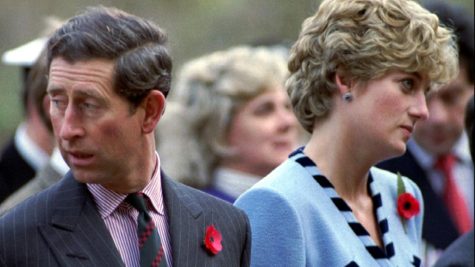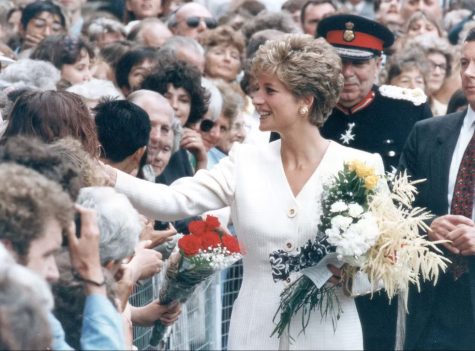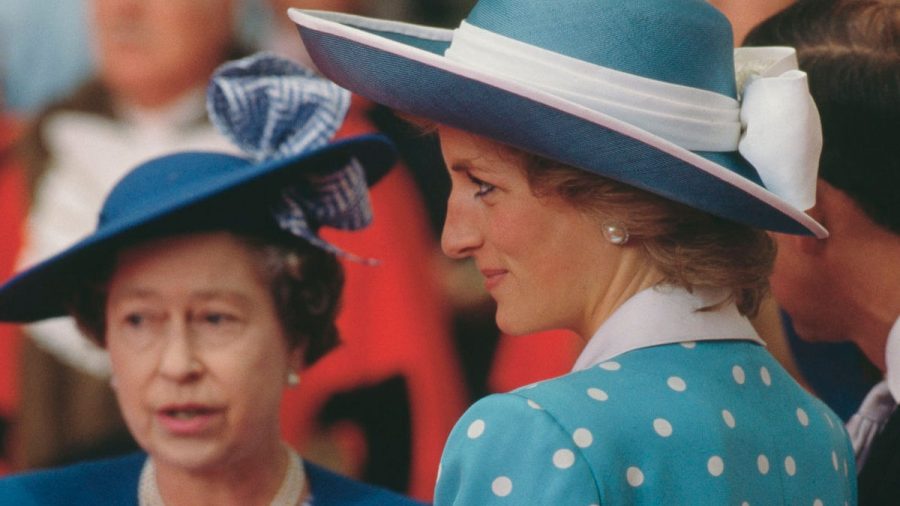The Monarchy and a Legacy Worth Changing
My first exposure to the royal family was watching Meghan Markle floating down the aisle, the train of her Givenchy dress following behind, about to marry Prince Harry. The elegance and extravagance had everyone captivated. After the union, Britons rushed to the Prince and Duchess’ carriage as they rode away to their palace. But is the institution deserving of the pedestal we put it on? The love of the monarchy often overshadows the harm that is associated with the centuries-old institution.
Lady Diana Spencer, Princess of Wales, was another member of the royal family that had gained popularity in the public eye for her elegance. Diana married Queen Elizabeth’s eldest son, Prince Charles
The public fell in love with her and her $156-million fairytale wedding. She was young and vibrant, adding youthfulness to the royal family. She got married in an ivory white dress with a glistening tiara and hand assembled bouquet. The public admired Princess Diana, many recreating her wedding dress and dreamlike venue for their own marriage. At the time, no one could see the pain behind Diana’s radiant facade.
 Shortly before her marriage, Diana discovered Charles’ affair after finding a bracelet engraved to Camila Parker Bowles. In retrospect, the red flags were clear as her fiancé commented while placing his hand on her waist,
Shortly before her marriage, Diana discovered Charles’ affair after finding a bracelet engraved to Camila Parker Bowles. In retrospect, the red flags were clear as her fiancé commented while placing his hand on her waist,
“Bit chubby aren’t we?”
These instances from her future husband, with whom she had only met 13 times before the marriage, devastated Diana. Her waist dropped from 29 inches to 23.5 inches by her wedding day. She later told the BBC in an interview that she struggled with an eating disorder and used bulimia as a coping mechanism to deal with the pressure of the royal family.
Upon marriage, the transition from her apartment to Buckingham Palace was isolating and lonely. Her mental health plummeted as she was taken into the royal family. Diana looked to Queen Elizabeth for help, hoping she could end the affair, but the Queen left Diana hopeless. She instructed her to ignore the affair and instead protect the House of Windsor and focus on raising her sons, William and Harry. Diana confronted Camila, but Camila refused to stop seeing Charles, telling Diana that she has everything and asking her what more could she want. Diana replied, “I want my husband”.
Devastatingly, Diana had plummeted down a path of finding escapes through self harm and regrettably, attempted suicide. This angered Queen Elizabeth as the monarchy and England saw Diana as unstable and wanting attention. Attempting to grasp at happiness, Diana began to partake in affairs, causing Queen Elizabeth to order a divorce between Charles and Diana.
A year after her divorce, Diana met her tragic fate while being driven from the Ritz hotel in Paris. Trying to avoid paparazzi, Diana was not wearing a seatbelt as her bodyguard was driving at a high speed. Paparazzi stood there capturing photographs.
When finally taken to the hospital, Diana was pronounced dead. The people were shocked and devastated: 2.5 billion people watched Diana’s funeral service on television, making it the biggest televised event at that point in history. Millions gathered outside the palace to leave flowers and look for a sign from the royal family addressing the death. The royal funeral service prayed for Charles and Diana’s sons but not Diana. Many people started to lose faith in the monarchy. Finally, a week later, Queen Elizabeth addressed the death in a heartwarming video, and the people found closure.
billion people watched Diana’s funeral service on television, making it the biggest televised event at that point in history. Millions gathered outside the palace to leave flowers and look for a sign from the royal family addressing the death. The royal funeral service prayed for Charles and Diana’s sons but not Diana. Many people started to lose faith in the monarchy. Finally, a week later, Queen Elizabeth addressed the death in a heartwarming video, and the people found closure.
Many refused to believe her death was an accident, and conspiracy theories prevail that her death was orchestrated. Provoking these conspiracy theories is Diana’s letter claiming that she feared for her life. She felt that someone was planning an accident, such as brake failure or serious head injury to clear a path so Charles could marry. Additionally, the security cameras were down on the street of the accident. Although these conspiracy theories are just rumors and should not be thought of as a reality, it started to show distrust in the monarchy. Slowly, the public started to bring the suffering the monarchy has caused out of the shadows.
In a recent turn of events, light shined on the institution’s vices is brighter than ever. On September 8th, 2022, at age 96, the Queen unfortunately passed. Queen Elizabeth has given the United Kingdom great stability as the monarchy has stayed constant through times of uncertainty, serving in World War II as an auto mechanic and persistent devotion to charity, she was loved by Britons and seen as a symbol of hope.
The new monarch, King Charles, lacks the popularity of Queen Elizabeth as many remain unsettled by his relationship with Princess Diana. Although the majority still are deeply loyal to the monarchy as a fixture of British culture, the monarchy is losing support; many are advocating that justice is needed for the pain the monarchy has caused.
After Meghan Markle and Harry brought awareness to the issues of the monarchy in an interview with Oprah Winfrey, the idea that the monarchy is a controlling and toxic institution developed further. When Meghan Markle came into the royal family, similar to Diana, she felt silenced and trapped. She claimed that she had to turn over her passport, drivers license, and keys. As a biracial woman, Meghan did not feel welcomed by the monarchy and when she went to seek help, she was left alone without support. She battled with severe depression until she and Harry left the monarchy and the confinement it put them in. The monarchy, an all-white ruling institution, had questioned the complexion of her child. Britons started to reconsider the values of the monarchy in relation to critical race theory; many starting to believe that the institution is preserving systemic inequalities.
Another issue of the monarchy is that the reason that the United Kingdom was able to grow to the world power it is now is through violence. In 16th-century British Imperialism, the monarchy expanded their empire, taking land while oppressing and exploiting the Natives to the land. The British monarchy devastated cultures in America, Asia, Africa, and Caribbeans in order to make money.
The love of Queen Elizabeth does not reflect on the love of the monarchy as a whole. As a part of British patriotism, it is possible to be reformed within while preserving its unique history. Many would agree that it is important to give justice to those who suffered unjustifiably. As a large institution that is looked up to by individuals and countries as well the royal family that is widely respected, the monarchy needs to take accountability not only to acknowledge those who are hurt, but to end the prevalent systemic inequalities in Europe and its allies.

Sarita Manocha, a senior, has found a passion for writing throughout her years at Keystone. In Keynote Sarita spreads awareness and brings to attention...

